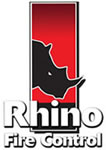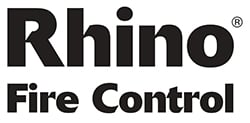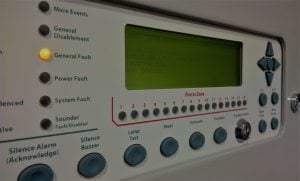
Reducing False Alarms
REDUCING FALSE AND UNWANTED ALARMS AT YOUR BUSINESS
Responsibility for limitation of false alarms rests with every party involved in the specification, design, installation, commissioning, management at operational level and maintenance of the fire detection and fire alarm system. False alarms at your business pose serious risks to businesses and potentially to staff. There are serious risks from false alarms including complacency towards fire alarms if regular false alarms are happening at your premises, time lost to a business increasing costs and the potential to accrue heavy fines from local councils. Perhaps most importantly false alarms drain valuable time, money and resources from local fire services. In 2016 Devon and Somerset Fire and Rescue services attended 4500 false alarm calls.
THE LEGAL COSTS OF FALSE ALARMS
 Under the Regulatory Reform (Fire Safety) Order 2005 businesses have a legal responsibility to maintain their fire alarm system to ensure it works properly. Failure to maintain your fire alarm systems can result in legal action and fines from local councils. In a recent case in Devon a beach holiday park was fined £40,000 plus £15,500 costs for failing to provide and maintain adequate fire safety planning. In a case in 2015 a flat management company was fined £22,500 plus costs for fire safety failures including a failure to provide and maintain an adequate fire detection and warning system.
Under the Regulatory Reform (Fire Safety) Order 2005 businesses have a legal responsibility to maintain their fire alarm system to ensure it works properly. Failure to maintain your fire alarm systems can result in legal action and fines from local councils. In a recent case in Devon a beach holiday park was fined £40,000 plus £15,500 costs for failing to provide and maintain adequate fire safety planning. In a case in 2015 a flat management company was fined £22,500 plus costs for fire safety failures including a failure to provide and maintain an adequate fire detection and warning system.
FIRE ALARM TESTING
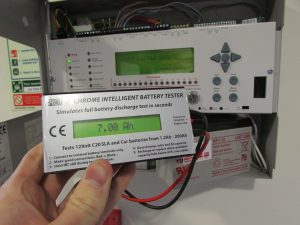 Your Fire Alarm System needs to be maintained in accordance with BS 5839-1. This ensures that the system is healthy, able to detect a fire and function correctly in the event of an activation. Regularly scheduled fire alarm inspection and testing should be completed and issues addressed as soon as possible.
Your Fire Alarm System needs to be maintained in accordance with BS 5839-1. This ensures that the system is healthy, able to detect a fire and function correctly in the event of an activation. Regularly scheduled fire alarm inspection and testing should be completed and issues addressed as soon as possible.
Regular scheduled testing is the only way to ensure your system remains in optimal working condition.
REDUCING THE CAUSE OF FALSE ALARMS
Reducing the cause of false alarms is pivotal to reducing false alarms. A full Fire Risk Assessment is the fastest way to identify and rectify major fire alarm risks – as you can identify whether the placement of machinery or other assets is potentially going to increase risks.
In addition there are a number of common causes of false fire alarms that can be easily addressed through proper procedures.
- Burnt Toast
In London in 2016 businesses were fined almost £500,000 for false fire alarms. False alarms accounted for a third of all fire alarm calls for the year. One of the top culprits was fire alarms in kitchen spaces within offices. Placement of cooking equipment, ensuring extractor fans are fitted and that cooking equipment, including toasters, are properly cleaned is essential to reduce these risks. Having staff made clearly aware of the risks and instructed not to leave food unattended also reduces these alarms dramatically. If you have a commercial grade kitchen, we advise that a fully automatic fire suppression system is installed.
- Dust
Dust is a fire risk in itself but it also causes fire system detectors to clog and can create false alarms in fire alarm systems. This is a particularly common cause of false alarms in manufacturing and industrial settings. Proper maintenance of extractor fans and regularly scheduled cleaning of fire alarms and machinery is essential to ensure systems remain in working condition.
- Heat
Machinery and electricals can produce significant heat. Without proper cooling systems and ventilation it is easy to produce false alarms from heat detection systems. Making sure your machinery is properly cooled and that rooms are properly ventilated is essential to avoid these false alarms.
- Unsuitable Systems
BS 5839-1:2013 35.2.4 Table 4
Considerations when using and selecting point and optical beam smoke detectors
|
Area |
Smoke detectors should never be installed |
Smoke detectors should be avoided if possible |
If smoke detectors are installed, they should not be of the type indicated |
|
Kitchens |
X |
|
|
|
Areas close to kitchens |
|
|
Ionisation chamber |
|
Rooms in which toasters are used |
|
X |
Ionisation chamber (Note 1) |
|
Rooms in which people smoke |
X |
|
(Note 2) |
|
Bathrooms and shower rooms |
|
|
|
|
Areas in which steam occurs under normal operations |
|
X |
Optical |
|
Areas in which airborne dust occurs |
|
X (Note 3) |
Optical |
|
Dusty room voids, loft spaces and similar environments |
|
X (Note 3) |
Optical (Note 4) |
|
Areas in which large numbers of small insects (e.g. grain thrips) might enter |
|
|
Optical (Note 5) |
|
Areas in which the sensing element of the detector will be exposed to high air velocities |
|
X |
Ionisation chamber Optical |
|
Ares in which there is high humidity likely to condense inside the detector |
|
X |
Ionisation chamber Optical |
|
Areas in which vehicle or other engine exhaust fumes occur |
|
X |
Ionisation chamber Optical beam |
|
Areas in which combustion gases may occur (e.g. certain boiler rooms) |
|
X |
|
NOTE 1 In confined spaces with poor ventilation, optical smoke detectors in close proximity to a toaster might give rise to false alarms, unless the detectors incorporate specific techniques for avoidance of false alarms.
NOTE 2 Certain optical smoke detectors that incorporate specific techniques for avoidance of false alarms might be suitable for installation in rooms in which people smoke.
NOTE 3 Regular cleaning or replacement of detectors might be necessary.
NOTE 4 Certain optical smoke detectors incorporate measures to filter out false alarms in the event of dust ingress.
NOTE 5 Optical detectors that are suitably designed to minimise unwanted alarms from insect ingress may be used in this application.
NOTE 6 Table 4 does not apply in the following circumstances:
- Where it is considered necessary to install smoke detectors or smoke detectors of a type indicated as unsuitable, but filtering measures are incorporated;
- Where, in a time-related system, the smoke detectors are disabled at times when the unsuitable environment exists;
- Where a multi-sensor smoke detector incorporates facilities to avoid unwanted alarms from the smoke sensor under the environmental conditions in question.
- Inadequate Training
All businesses should have a responsible person or persons who is fully trained in all regular maintenance and monthly inspections. Often false alarms are caused by inadequate policies and procedures – for example when using equipment or machinery. Ensuring training is in place and completed by all staff members can significantly reduce false alarms.
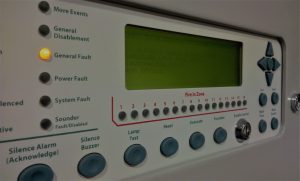
CONTACT US
For any aspect of fire alarm inspection, servicing or fire safety training you can always contact us. We are happy to support you in any aspect of fire safety and will work with you to ensure all legal and safety requirements are met and maintained.
